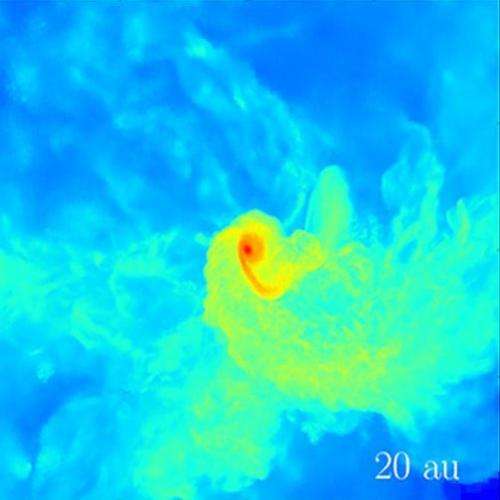The cosmic seeds of black holes

Supermassive black holes with millions or billions of solar-masses of material are found at the nuclei of most galaxies. During the embryonic stages of these galaxies they are thought to play an important role, acting as seeds around which material collected. During the later lifetime of galaxies they can power dramatic outflowing jets of material (among other phenomena) as infalling dust and gas accretes onto the disks that typically surround them. These active, later phases of supermassive black holes can result in turning galaxies into an extremely bright objects like quasars, whose luminosities allow them to be seen at cosmic distances. In fact, quasars have recently been detected from eras less than a billion years after the big bang.
But where do all these black holes come from – especially the ones present in the early universe!? The explosive death of massive stars, one nominal route, can take many hundreds of millions of years while the star itself coalesces from ambient gas and then evolves, after which material must be added to the black hole seed to grow it into a supermassive monster. It is not clear that there is enough time in the early universe for this to happen. A second method has been proposed for these cosmic seeds, the direct collapse of primordial gas into seedlings that are much more massive – about ten thousand solar-masses - than are those present in stellar ashes.
Computer simulations have struggled for years to predict what happens in direct collapse, with mixed successes. CfA astronomers Fernando Becerra, Thomas Greif, and Lars Hernquist, and a colleague, have just published the most detailed 3-D simulation of the process in the early universe with an amazingly fine spatial scale precision—as small as the solar-system—and spanning a factor of over ten trillion in size and twenty orders of magnitude (a factor of one hundred million trillion) in gas density. They find that a small protostellar-like core of only 0.1 solar-masses can develop in only a few years from a suitable environment and then can grow into a supermassive black hole in only millions of years. In particular, they find that fragmentation, which had been predicted to disrupt the growth of these seedlings, is not a serious problem. Their result is a significant step towards explaining the cosmic origins of the seeds of galaxies.
More information: "Formation of Massive Protostars in Atomic Cooling Haloes," Fernando Becerra, Thomas H. Greif, Volker Springel, and Lars E. Hernquist, MNRAS 446, 2380, 2015.
Provided by Harvard-Smithsonian Center for Astrophysics




















